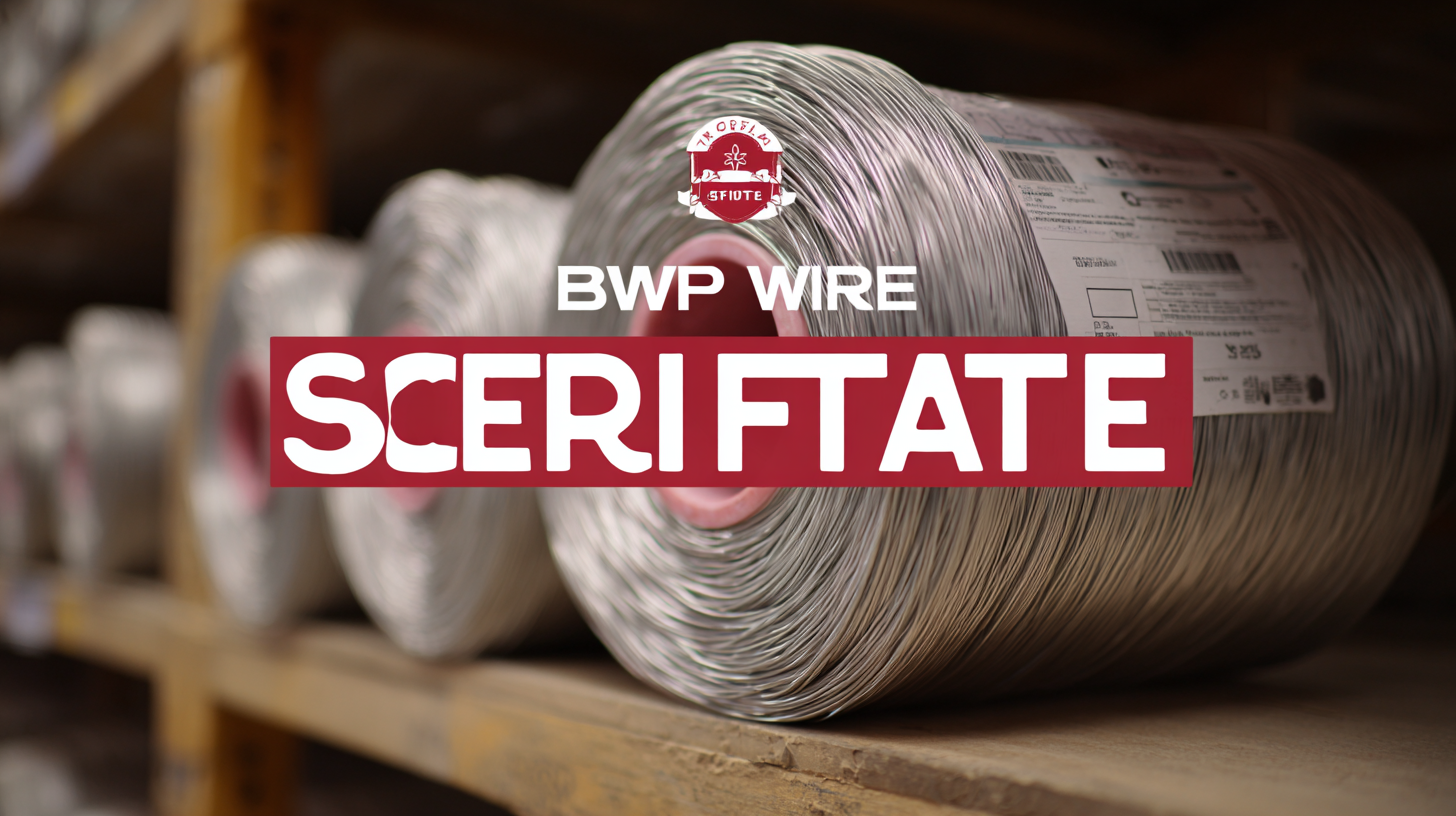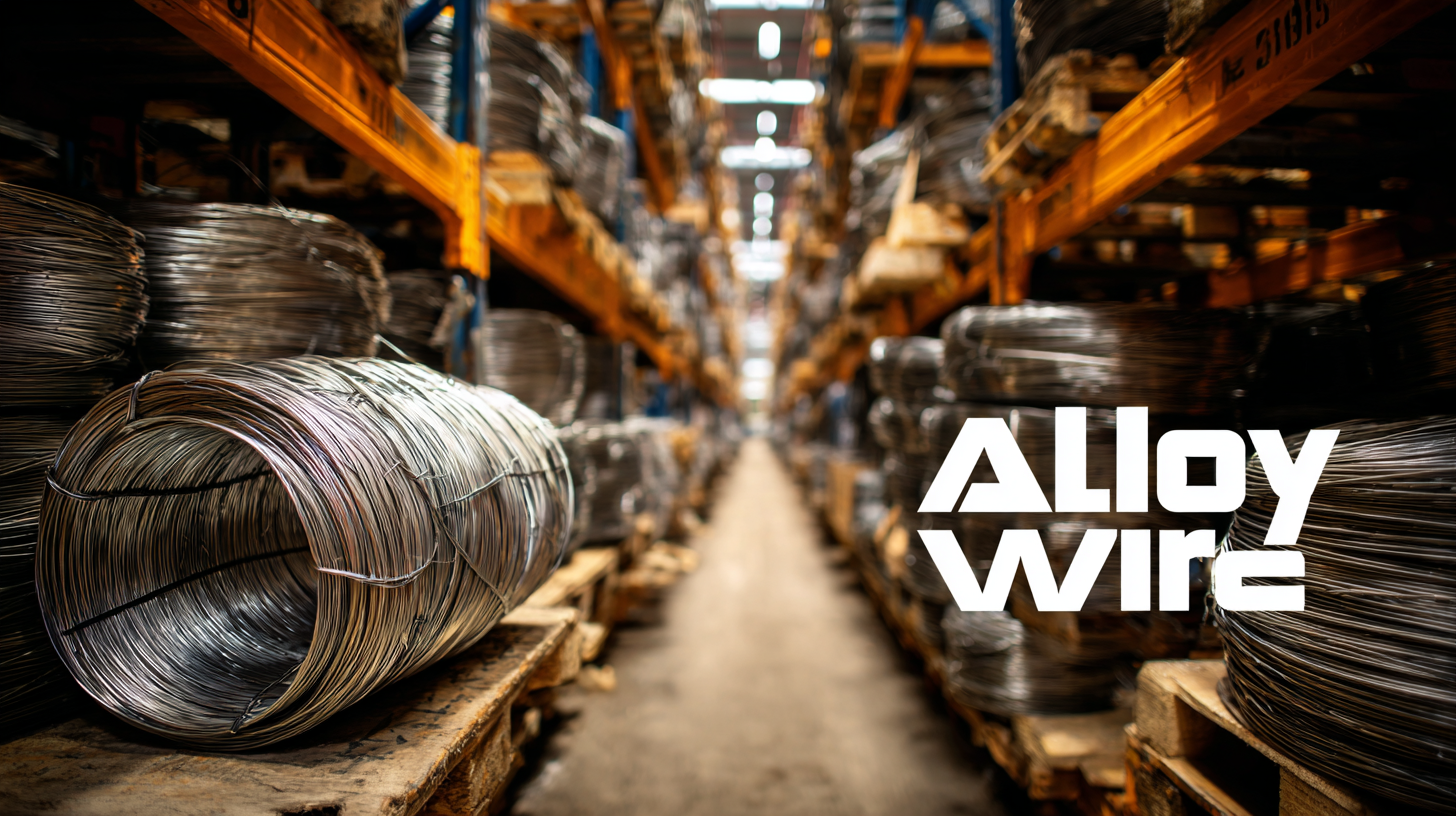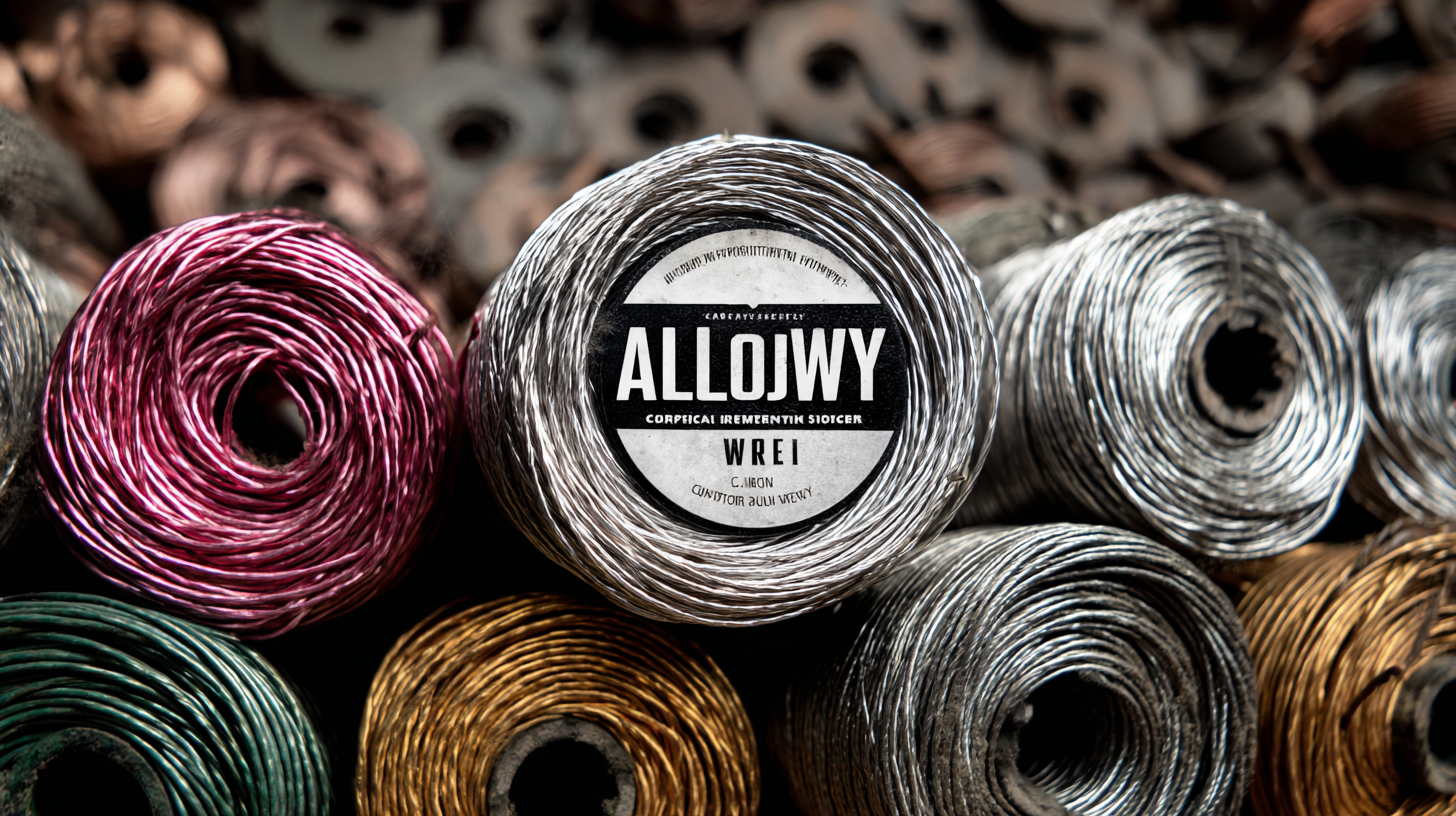In today's global marketplace, the seamless movement of goods is critical to supply chain success, particularly in the alloy wire industry, which is projected to grow significantly, reaching a market value of approximately $13.3 billion by 2027 according to recent research reports. As manufacturers leverage advanced materials for a variety of applications—from aerospace to electronics—the importance of navigating import and export certifications cannot be overstated. These certifications not only ensure compliance with international trade regulations but also enhance product quality and market access. By understanding the benefits of effectively managing these certifications, companies involved in the alloy wire supply chain can minimize delays, reduce costs, and ultimately achieve a competitive edge in a rapidly evolving industry.

Navigating the import regulations for alloy wire requires a thorough understanding of the key certifications that ensure compliance and quality in manufacturing. With recent developments such as India's mandate to revise quality standards for copper products, it's crucial for businesses in the alloy wire supply chain to be aware of these requirements. These new regulations aim to limit subpar imports, thereby enhancing the competitiveness of domestic manufacturers. Companies must familiarize themselves with these quality norms to avoid compliance issues and ensure their products meet the necessary specifications.
In addition to understanding the regulations, businesses must also consider the setup costs associated with establishing a manufacturing plant for alloy wire. Reports focusing on copper alloy wire manufacturing outline essential details about investment requirements, machinery needed, and necessary permits. As industries adapt to evolving regulations, staying well-informed about certification requirements and associated costs will be vital for success in the alloy wire supply chain. This proactive approach will not only facilitate smoother operations but also strengthen the overall market position of businesses in the global landscape.
| Certification Type | Description | Regulatory Authority | Importance | Regions Applicable |
|---|---|---|---|---|
| ISO 9001 | Quality management systems standard. | International Organization for Standardization | Ensures product quality. | Global |
| CE Marking | Indicates conformity with health, safety, and environmental protection standards. | European Union | Mandatory for market access in Europe. | European Economic Area |
| RoHS | Regulates hazardous substances in electrical and electronic equipment. | European Union | Ensures environmental safety. | EU Member States |
| UL Certification | Safety certification mark for products. | Underwriters Laboratories | Indicates product safety. | North America |
| AS9100 | Quality management system for aerospace industry. | International Aerospace Quality Group | Critical for aerospace suppliers. | Global |
When engaging in international trade, particularly in the alloy wire industry, understanding export compliance essentials is critical. One of the primary challenges exporters face is navigating the various foreign certification requirements. Each country has its own regulations that can dictate the standards for materials and products, which means exporters must thoroughly research and comply with these regulations to avoid potential penalties or shipment delays.
Foreign certification may involve obtaining specific approvals or documentation to demonstrate compliance with safety, environmental, or quality standards. This can include ISO certifications, industry-specific testing results, or adherence to local regulations regarding environmental impact. Exporters must not only be meticulous in gathering these certifications but also ensure they are current and valid throughout the shipping process. An effective strategy includes maintaining open communication with foreign distributors and regulatory bodies to stay updated on any changes in certification requirements. This proactive approach minimizes risks and fosters smoother transactions in the complex landscape of international trade.
 When navigating the complexities of alloy wire certifications, it's crucial to understand the differences between domestic and international standards. Domestic standards often focus on specific compliance metrics that meet local industry needs, whereas international standards provide a broader framework that ensures quality and safety across various markets. Familiarity with these requirements helps in streamlining the supply chain and mitigating potential disruptions.
When navigating the complexities of alloy wire certifications, it's crucial to understand the differences between domestic and international standards. Domestic standards often focus on specific compliance metrics that meet local industry needs, whereas international standards provide a broader framework that ensures quality and safety across various markets. Familiarity with these requirements helps in streamlining the supply chain and mitigating potential disruptions.
Tip: Always stay updated on the regulatory landscape by subscribing to industry newsletters or joining relevant professional organizations. This keeps you informed about changes in certification standards that could impact your operations.
In addition, aligning your manufacturing processes with both domestic and international certifications can enhance your market competitiveness. By adopting international standards, you not only meet regional compliance but also position your company to engage globally, thus attracting a wider customer base.
Tip: Consider conducting a gap analysis to identify where your current practices align or diverge from international standards. This proactive approach enables you to strategically plan for necessary adjustments and ensures optimal compliance.
In the intricate world of alloy wire logistics, managing risks is paramount to maintaining a seamless supply chain. One of the most effective strategies for mitigating these risks is through the implementation of rigorous certification processes. Certifications not only validate the quality and safety of products but also signify compliance with international standards, fostering trust among stakeholders. For manufacturers, this means that they can confidently source materials and rely on suppliers who adhere to these norms, leading to a more resilient supply chain.
Moreover, navigating the complexities of import and export certifications can significantly enhance the efficiency of alloy wire logistics. By ensuring that all necessary documentation and certifications are in place, companies can reduce delays at customs and avoid costly penalties. Understanding the specific certification requirements for different markets is crucial for companies seeking to expand their operations globally. In this context, investing time and resources into achieving and maintaining relevant certifications can yield substantial long-term benefits, positioning businesses to thrive in a competitive marketplace.
In the realm of import and export, efficient documentation plays a pivotal role in ensuring the smooth certification processes necessary for alloy wire supply chain success. According to a report from the International Trade Centre, sub-optimal documentation practices can lead to delays impacting 34% of companies in the alloy industry. Ensuring that all necessary certificates—such as those verifying compliance with international standards—are meticulously prepared can significantly expedite customs clearance and reduce any potential financial ramifications associated with delays.

To navigate the complexities of import and export certifications, best practices suggest establishing a standardized documentation checklist tailored to alloy wire products. This checklist should encompass critical documents including certificates of origin, quality assurance, and compliance with regulations such as REACH and RoHS. The World Customs Organization notes that companies adopting a robust documentation strategy see up to a 20% improvement in customs processing times. Furthermore, regular staff training on evolving regulations not only enhances compliance but also fosters a culture of precision and accountability within the organization, mitigating risks associated with non-compliance and ultimately safeguarding the supply chain.
